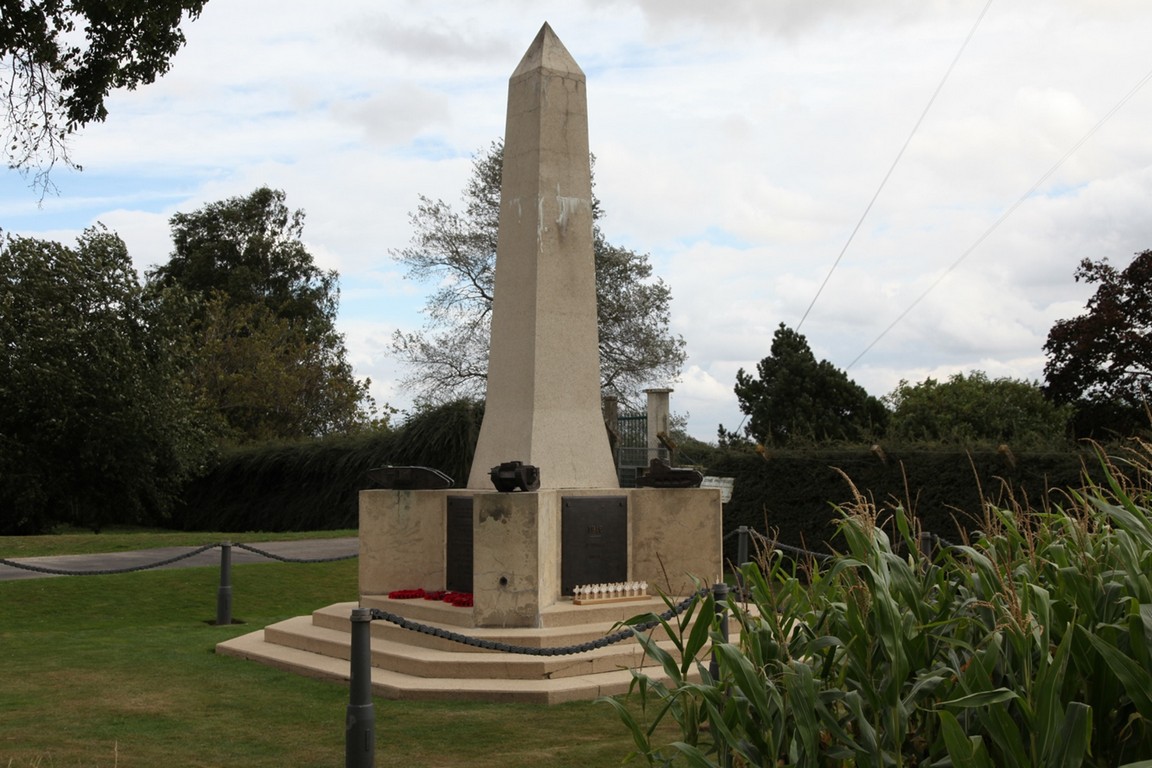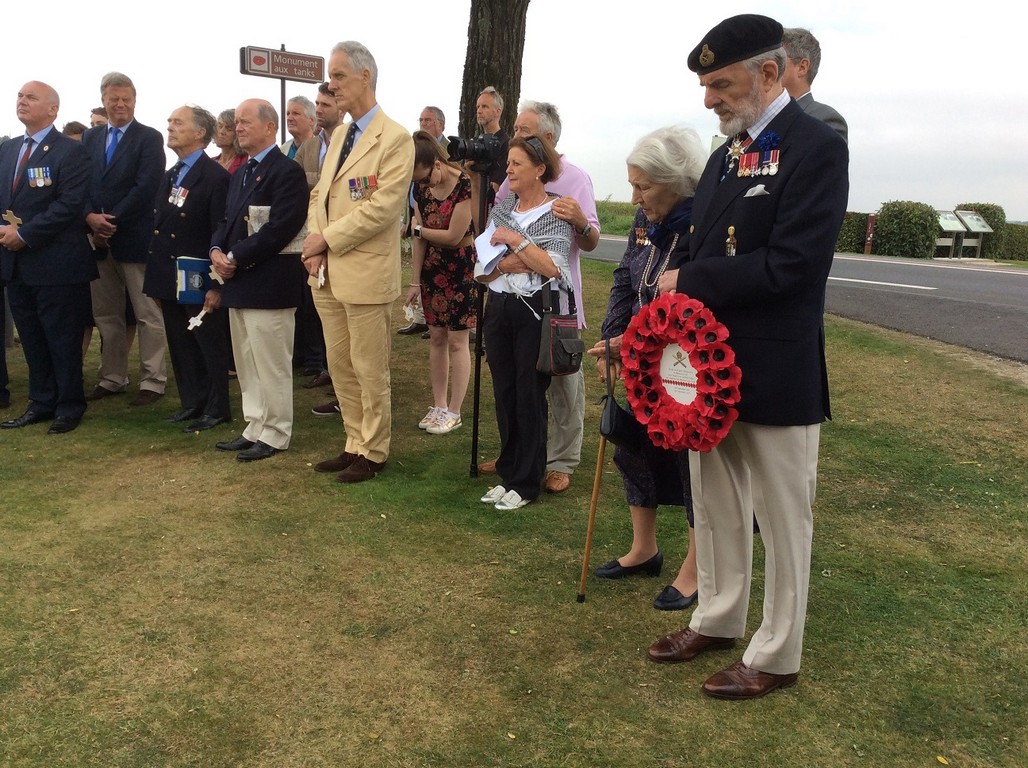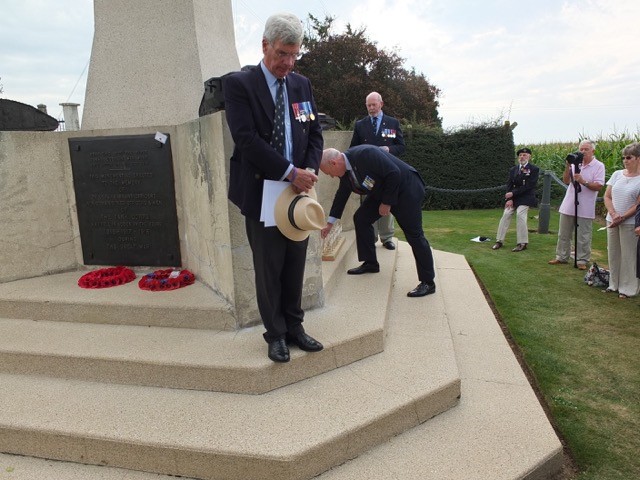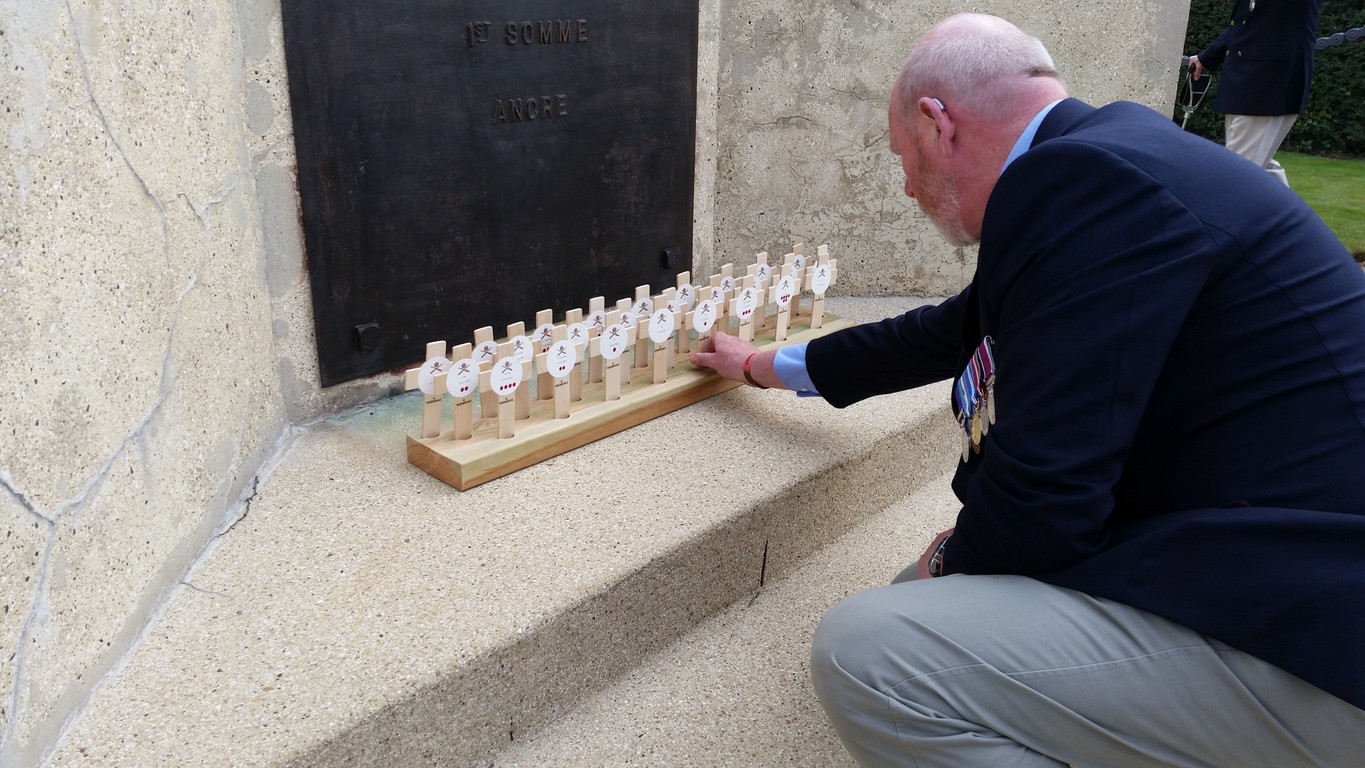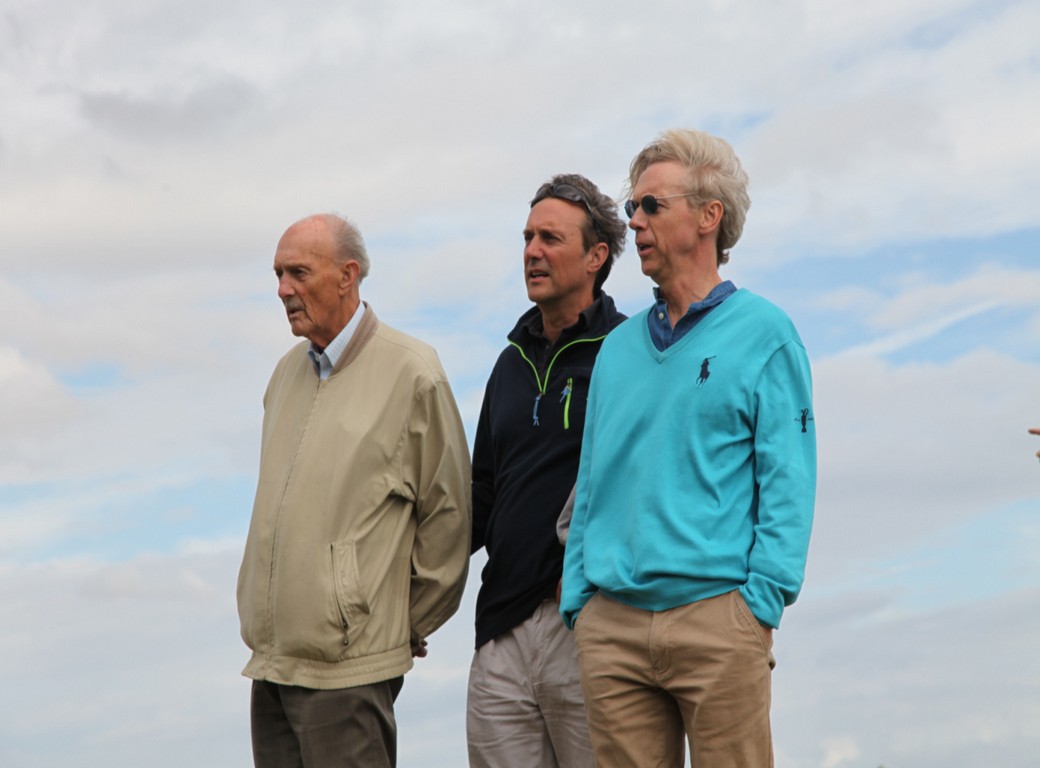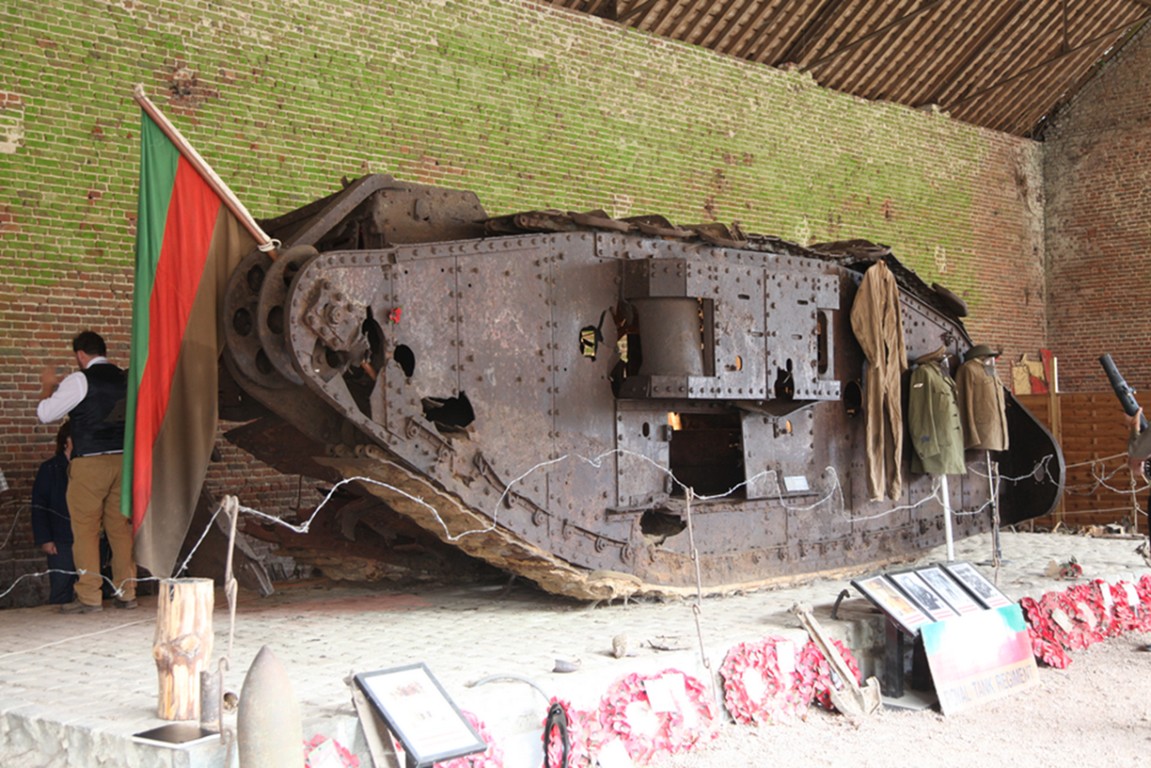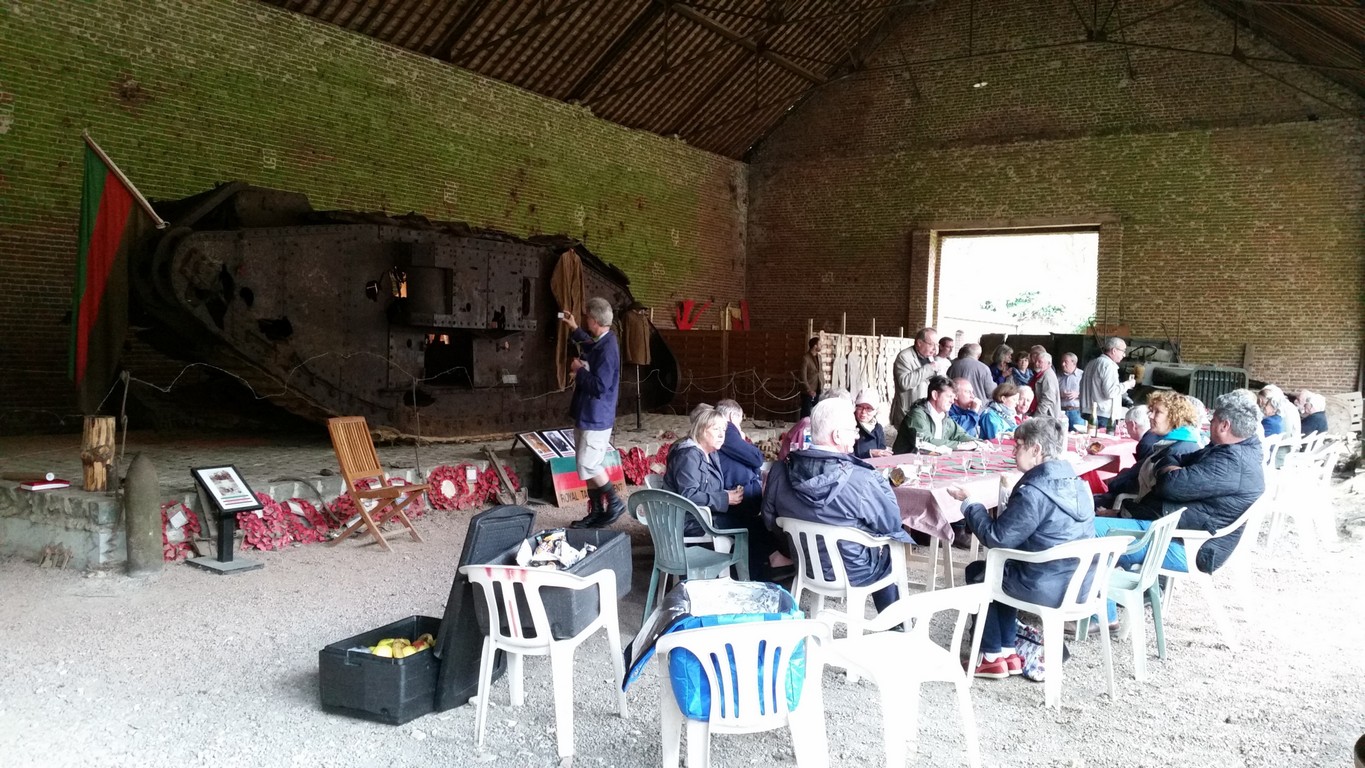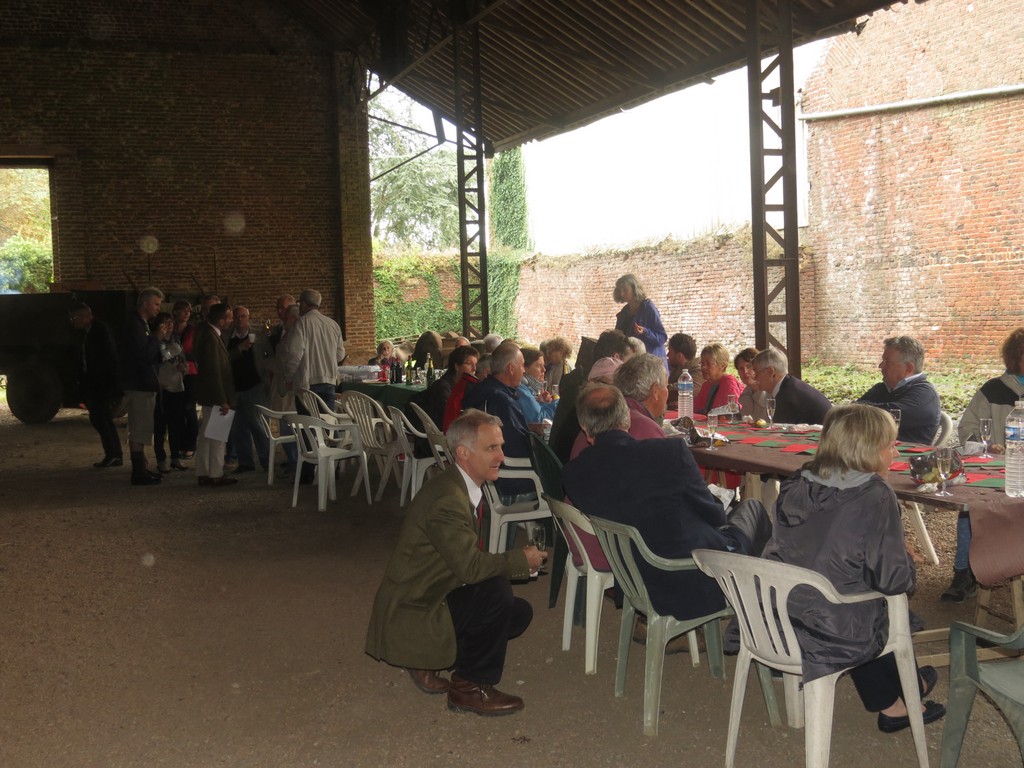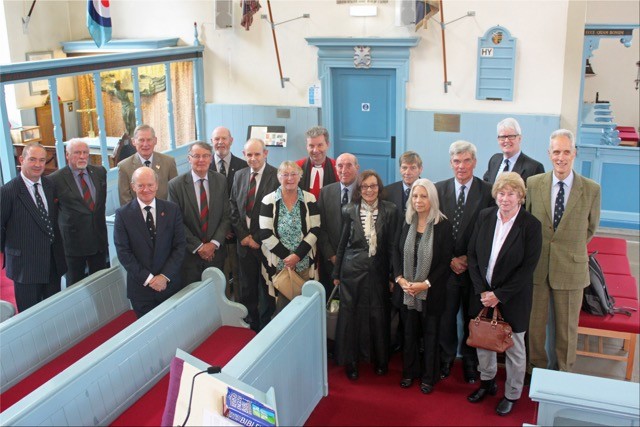2016 – The Centenary Commemoration at Flers Courcelette
The Centenary Commemoration of the first ever use of tanks in Battle at Flers-Courcelette near Albert, France, September 2016.
Thanks to Major Stephen Pope who searched for and gathered the relatives of the original tank crews and conceived the whole event; thanks also to the battlefield-tour expertise of Colonel Geoffrey Vesey-Holt; to painstaking co-ordination by Brigadier Martin Speller who led the Exiles; and to Colonel Stephen May, the Regimental Colonel, who co-ordinated the involvement of serving members of the Regiment, we were to follow the action of the first tank crews to face an enemy in a close contact battle.
The photographs which follow were taken by members of the group. I wish to express my thanks and to give attribution to Brigadier Martin Speller, Major Stephen Pope, Sue Chifney, Sarah Lambert, Dr Graham Archard, Alan Hobbs, Stuart Sampson, Colonel Stephen May, Cosmo Corfield and Dr Tilly Mortimer. I am also most grateful to Stephen Pope for his advice on the texts, and for the maps taken from his book , “The first Tank Crews” ISBN 978-1-910777-77-0 published in 2016 by Helion and Company Limited.
The Commemoration Party would have three constituent elements: Relatives of the First Tank Crews pictured here; the 4 RTR Exiles; and a uniformed party from the Royal Tank Regiment.
The Relatives gathered informally on the first evening at the Hotel Beatus, hosted by the owner, Philippe Gorczynski, (Honorary MBE), a great friend of the Regiment, renowned tank enthusiast and historian. The Relatives were thrilled to be present for this five days of exploration and commemoration of the exploits of their relations.
On the morning of Thursday 15 September the Relatives and the Exiles arrived at the Pozieres Windmill to hear of the significance of the site, and to lay wreaths and crosses at the Tank Memorial.
The narration at the Pozieres Windmill was Major Stephen Pope, Colonel Geoffrey Vesey-Holt and Dr Graham Archard who read from the diary of his grandfather, Gunner Victor Archard who fought in C2 “Cognac”.
Then the individual named crosses were laid. Brigadier Martin Speller in the foreground.
Sue Chiffney, great niece of Gunner Harry Leat who was a crewman in D1″Daredevil”, placed a poppy cross to his memory.D 1 was the first tank to go into action on 15 September 1916. Harry was subsequently killed In Action at Bullecourt on 11 April 1917, whilst serving with No 11 Company of D Battalion.
Thirteen of the “Exiles” taking part in the visit. All had served in the Fourth Royal Tank Regiment. Piper Scot Bell played superbly throughout.
That first afternoon we were at Bulls Road Cemetery commemorating those of D Coy who died at Flers. Major Stephen Pope (left) and Colonel Geoffrey Vesey-Holt narrate.
At every stage we were honoured with the presence of local mayors, one of whom, M. Pierrick Capelle the Mayor of Flers, was about to lay a wreath at the grave of Cyril Coles the first tank crewman to be Killed in action.
Sarah Lambert, from the Tank Museum who had researched the life of Gunner Cyril Coles, also pays her respects.
We assembled at the Australian Imperial Force Burial Ground near Flers and were joined by serving officers and men from the Royal Tank Regiment and French veterans.
It was down this very road that a pilot flying above the village on 15 September 1916 transmitted “A tank is walking down the High Street of Flers with the British Army cheering behind”. “Flers fell that day. Previous attempts to capture it had cost thousands of lives.
Brigadier Martin Speller (left) and Colonel Gavin Thompson, in his capacity as Deputy Colonel Commandant, laid wreaths. Brigadier Martin’s grandfather was a Senior NCO in 12th Battalion East Surrey Regiment, who were supported by D Company at Flers on 15 September 1916.
We presented the Mayor of Flers with a parchment devised by Brigadier Martin Speller, listing the names of each D Company crew member taking part in the battle. Here M. Pierrick Capelle replies.
The Mayor of Courcelette, M. Michel Dacheux, prepares for the ceremony. Brigadier Nick Cocking in the foreground.
A Parchment detailing the names of all crew members involved in the battle at Courcelette is presented to the Mayor.
Piper Scot Bell played after our formal dinner night. The Pipes and Drums of the Fourth were our pride and joy but for some it is an acquired taste !!
Reg Aycock (left), son of Gunner Reg Aycock MM who crewed HMLS Chablis in September 1916, with his sons at Courcelette in September 2016.
On our last day we turned our thoughts to Cambrai, thirteen months later – 20 November 1917. By then it wasn’t just two tank companies but nine tank battalions taking part. This battle map is the feature in Philippe Gorczynski’s memorial at Flesquieres.
The view from the Flesquieres stand. Note the tank tracks in the foreground. The narration was by Col Gareth Davies.
At noon on Saturday 17 September we visited the Deborah Barn in Flesquieres to see the Mk IV Tank which M. Philippe Gorczynski, our host at Hotel Beatus, had excavated from the Cambrai mud. Here he is briefing his team before we arrive for a most memorable event.
Refreshments are prepared by the “Friends of Deborah”, many of them farmers and some of them war veterans. Note the RTR paper napkins.”
The four Deborah crewmen killed at Flesquieres. Corporal George Foot DCM (left) had fought in Delphine D 21 on 15 September 1916
An unforgettable visit for each Relative.
Dr Tilly Mortimore, the daughter of Captain Harold Mortimore who commanded D1 “Daredevil” at Delville Wood on 15 September 1916, with his grandson Max.
After the Exiles returned to the UK a copy of the Parchment containing the names of the D Company crews was lodged at the Canongate Kirk in Edinburgh on 7 October alongside the Fourth’s Standard and plaque. This final photograph shows the group at the Kirk which included Exiles and members of the Scottish Branch of the Regimental Association.





